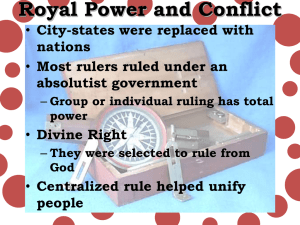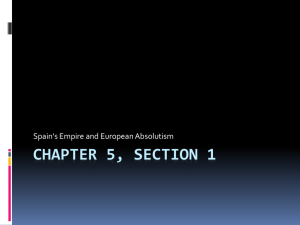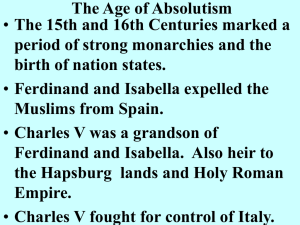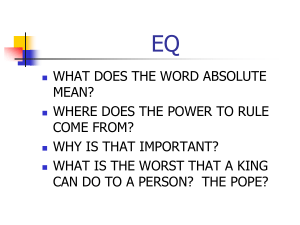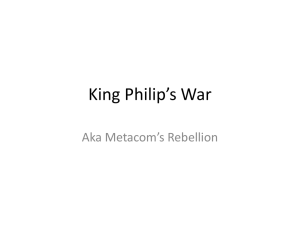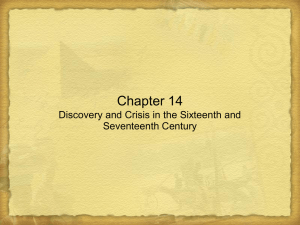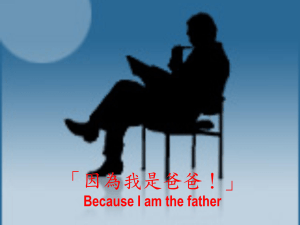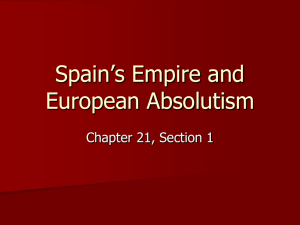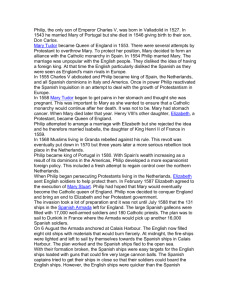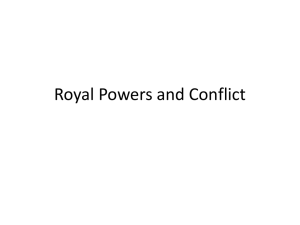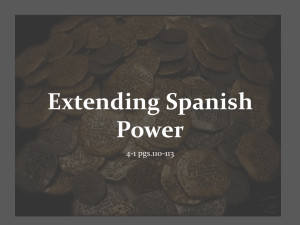World History Chapter 8 sec 1
advertisement
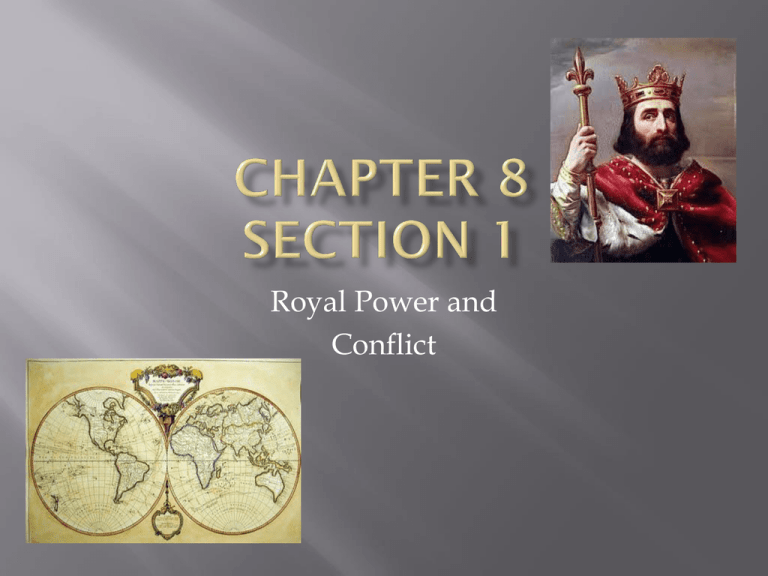
Royal Power and Conflict In the 1500s and 1600s, European monarchs sought to create powerful kingdoms in which they could command the complete loyalty of all their subjects. This form of government, know as absolutism, placed absolute, or unlimited, power in the monarch and his or her advisers. The strength of absolutism rested on divine rightthe political idea that monarchs receive their power directly form God and are responsible to God alone for their actions. An absolute monarchy, it was reasoned, would unify diverse peoples and bring greater efficiency and control. During the age of absolutism, the Hapsburgs remained Europe’s most powerful royal family. But their lands were too scattered for any one person to rule effectively. To remedy this problem, Charles V retired in 1556 and divided the empire, leaving the Hapsburg lands in central Europe to his brother, Ferdinand, who became Holy Roman emperor. He gave Spain, the Netherlands, southern Italy, and Spain’s overseas empire to his son, Philip II. Philip II, who ruled from 1556 to 1598, was the most powerful monarch in Spanish history. A devout Catholic, Philip saw himself as the leading defender of the faith. His efforts to end Protestantism in his domains made him the enemy of all Protestants. The son of Holy Roman Emperor Charles V and Isabella of Portugal, Philip worked to increase the Hapsburg family’s power throughout Europe. However, this effort led Philip to involve Spain in a number of costly European wars. Philip was cautious, hardworking, and suspicious of others. He built a granite palace, which served as royal court, art gallery, monastery, and tomb for Spanish royalty. Bureaucrats, or public servants, advised him and handled routine matters, but he made all decisions and signed all papers that he received. Philip faced many difficulties in ruling Spain. For example, a unified system of government had not been set up. Separate laws and local authorities remained in place, but the ways of the Holy Roman Empire , central Europe, became the way of life. And Madrid, the largest city in Spain became the capital. Philip had to deal with a number of troubling religious issues in his European domains. He was concerned about the loyalty of large religious minorities in Spain. These minorities included Protestants, the Marranos (Jews who converted to Christianity,) and the Moriscos (Muslims who had become Christians.) Concerned, he supported the execution of these groups, and supported the idea of expelling them from the country. Philip also sought to impose Catholicism on the Netherlands, Dutch Protestants rebelled however against his rule. The conflict was long, bloody, and complex. The Dutch declared their independence in 1581, but the fighting continued. Eventually, England gave support to the Dutch. At the same time this fighting was going on Philip also extended his rule in the eastern Mediterranean, where he defeated the Ottoman Turks in a naval battle off the coast of Greece. Catholic Spain faced a growing challenge from Protestant England. For example, Philip at first had supported Elizabeth I as England’s queen against the pope’s wish. When Elizabeth aided the Dutch, Philip decided to act against her causing growing challenges from England. He invaded England. He sent in a force of 130 ships and 33,000 men, known as the Spanish Armada. They sailed to the English coast. An Armada is a fleet of warships organized to carry out a mission. Months later, the Armada entered the English Channel and even though the English had faster, more maneuverable ships and longer range cannons than did the Spaniards, they were at first unable to block the Spanish formation. However, English fire ships, were able to separate the Spanish vessels. Running out of shot and short of water, the Spanish fleet retreated to the storm North Sea. After circling the northern tip of Great Britain, a number of Spanish ships later sank near the rocky coasts of Scotland and Ireland. The defeat of the Armada not only ended Philip’s plans to invade England, it also marked the beginning of Spain’s decline as a sea power and during the next two centuries, the Dutch Netherlands, England, and France would gradually reduce Spanish power in Europe and around the world. http://www.youtube.com/watch?v=nwKefbYtfa A
